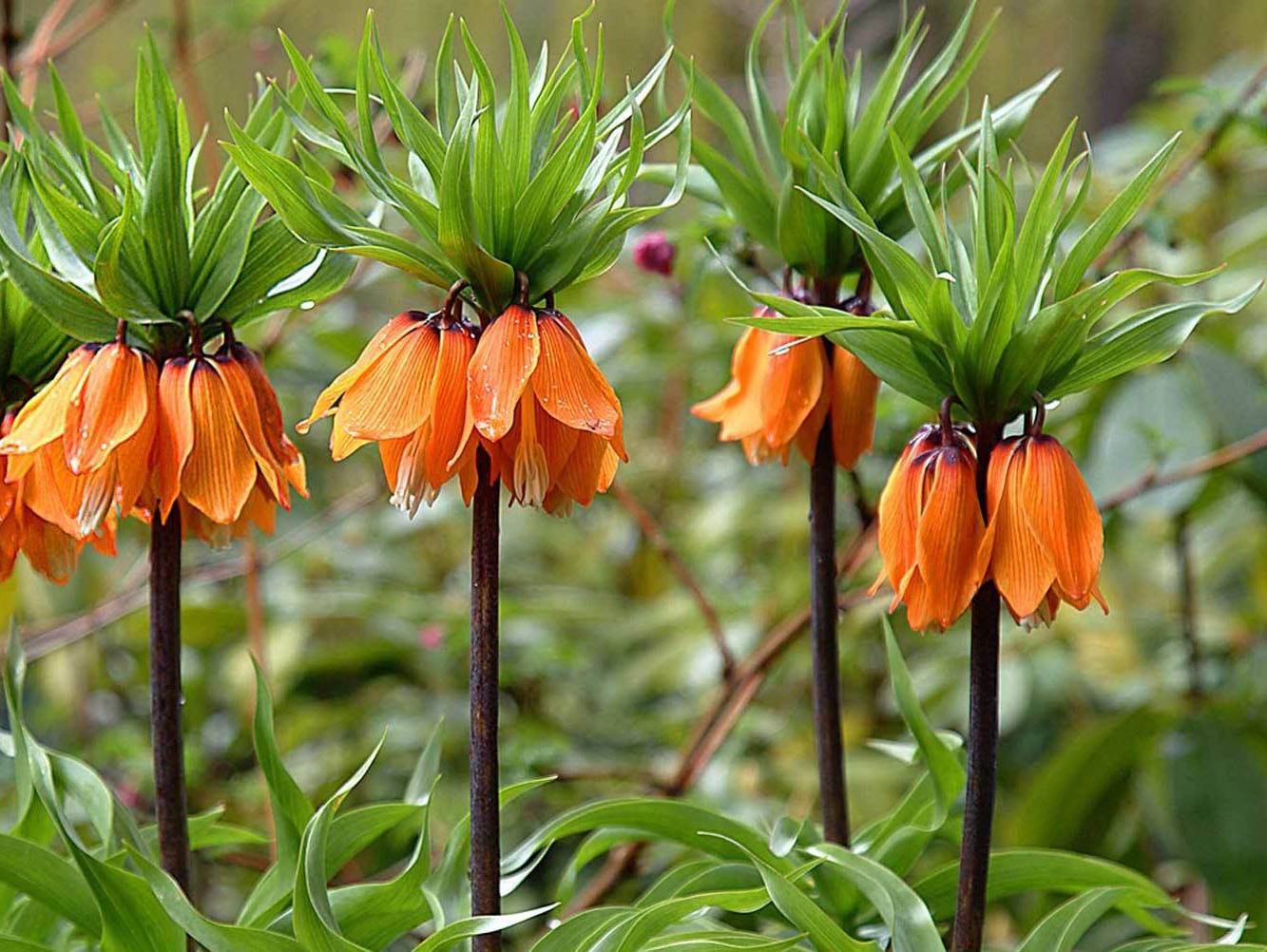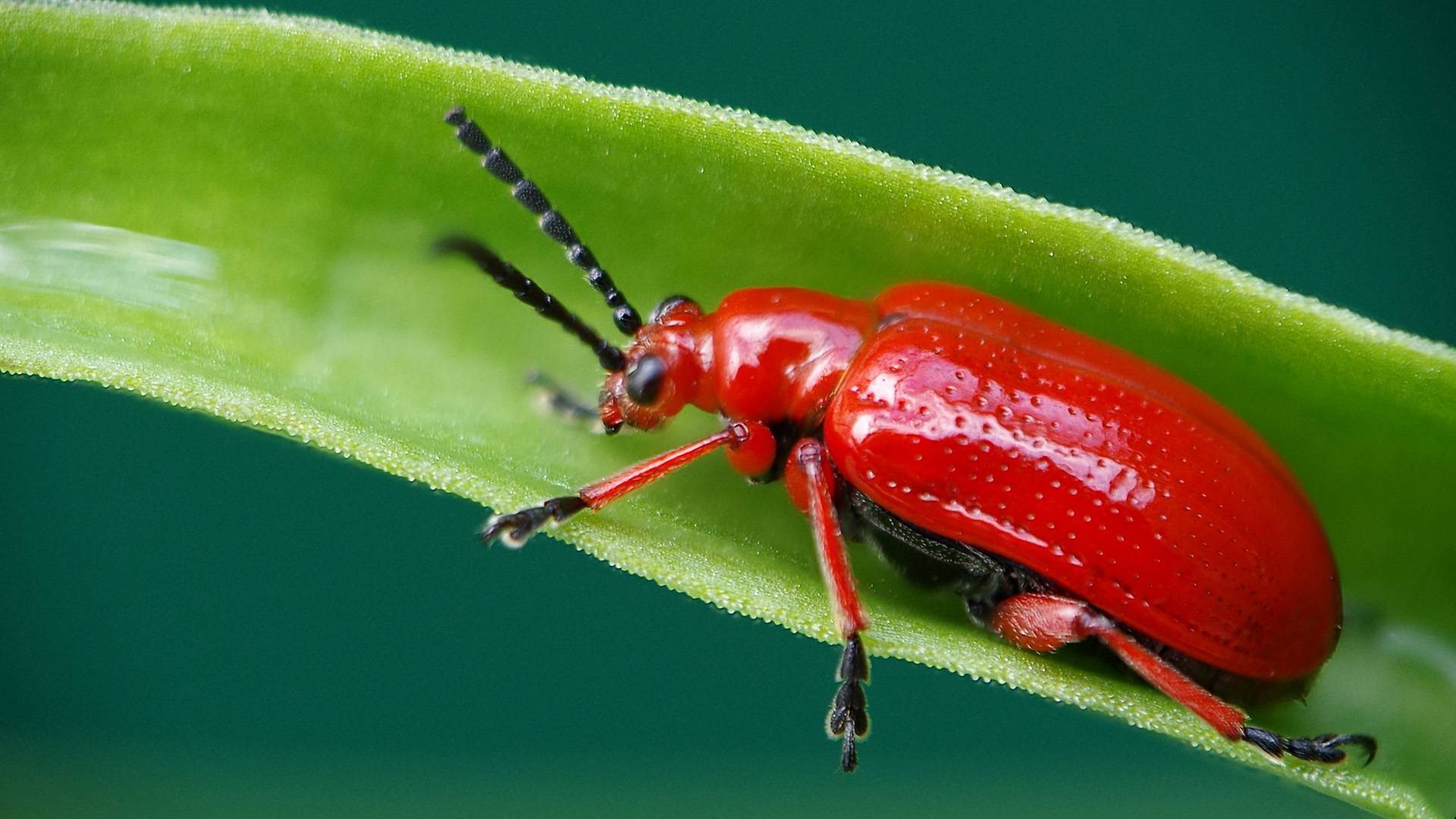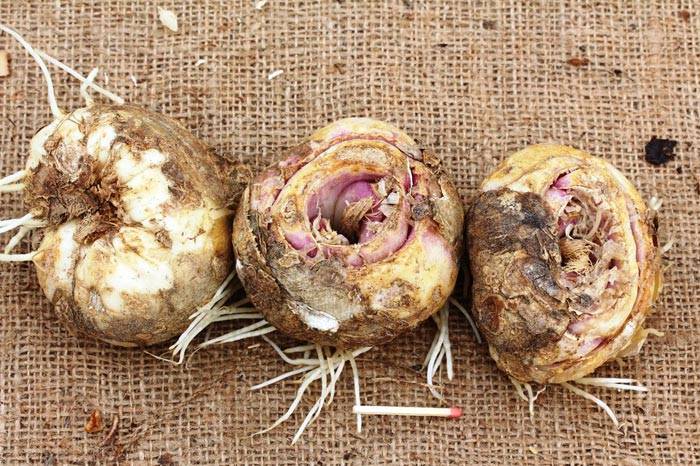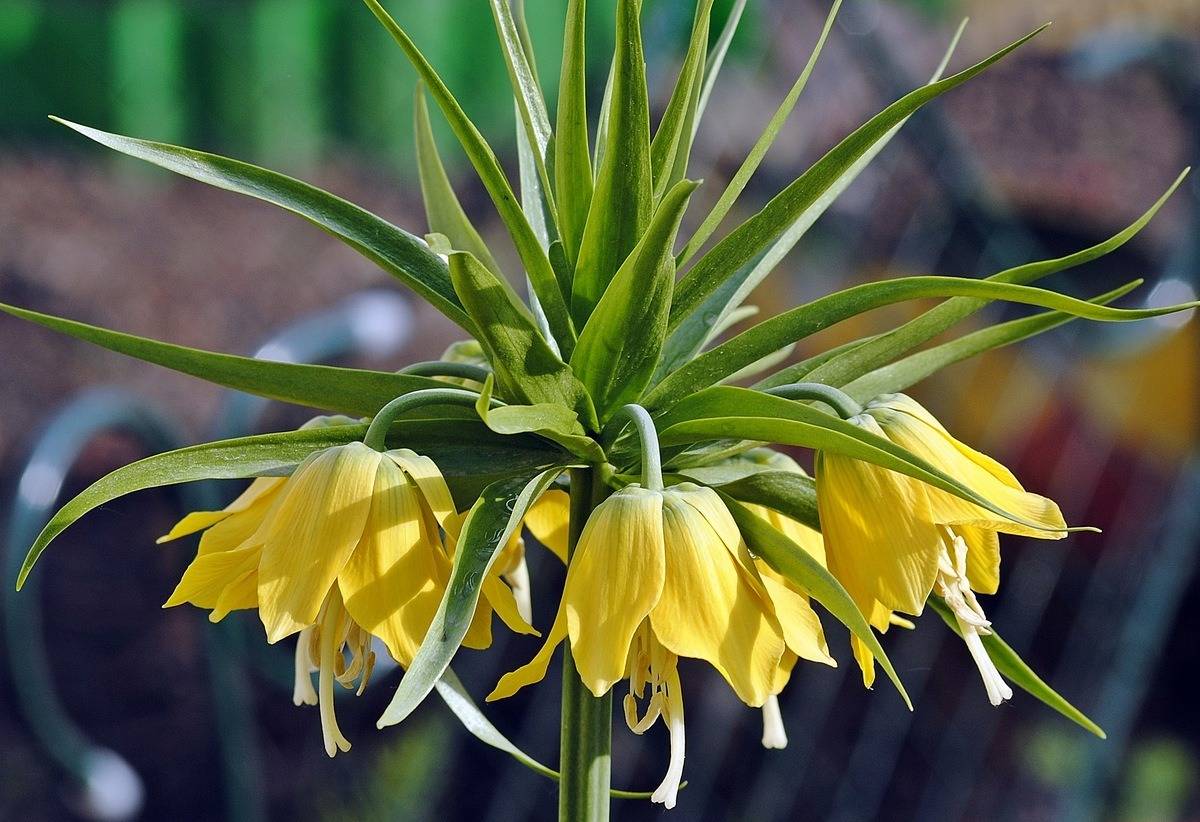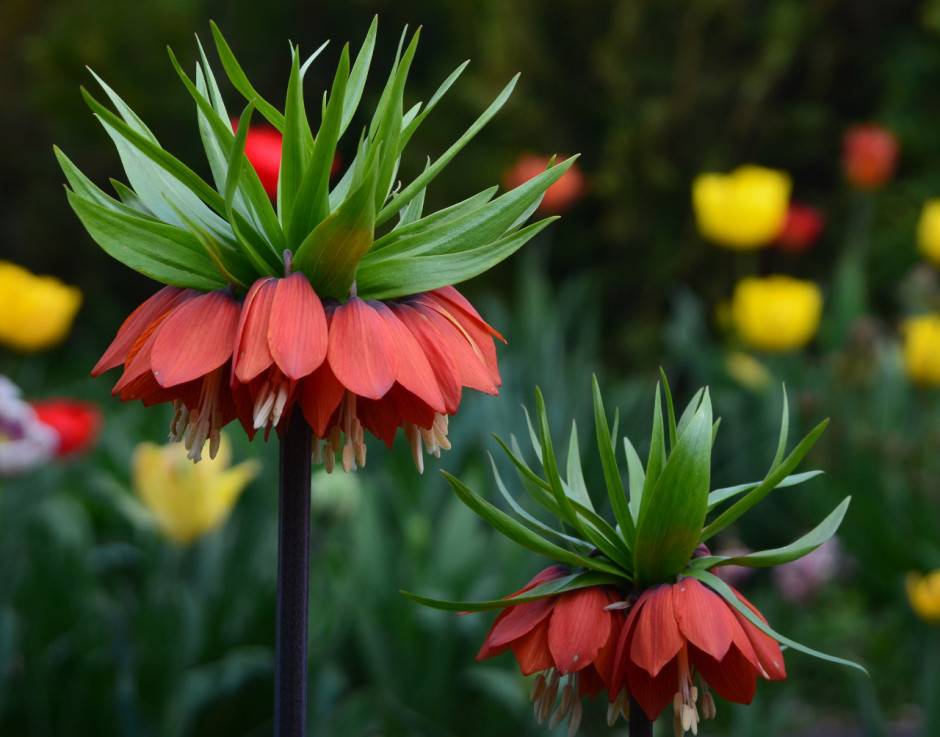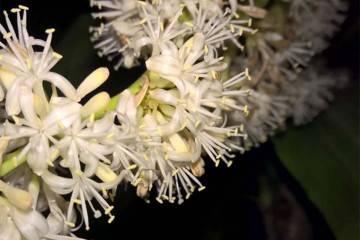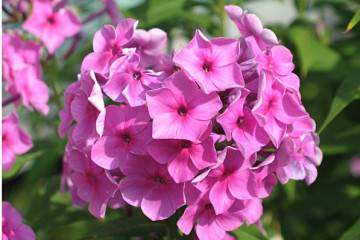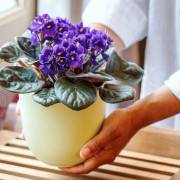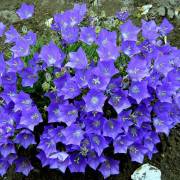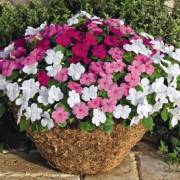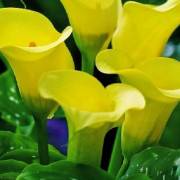Why does the imperial hazel grouse not bloom, some leaves
Content:
The imperial hazel grouse is one of the most beautiful flowers with which you can decorate the flower beds of the garden. It can be grown in groups with other flowers or alone. This gives gardeners ample room to create unique garden designs. Like other decorative flowers, hazel grouse, as it is sometimes mistakenly called, also needs special care to maintain vigorous growth and lush bloom.
The leaves of the plant are bulky panicles growing upward, and the flowers, which look like inverted tulips, look very graceful. And it is not surprising that many gardeners are offended when green panicles sprout in early May, they dry up in June, and the plant is not going to bloom. Therefore, it is worthwhile to study this problem in detail and answer the question of why the imperial hazel grouse turns yellow and at the same time its flowering is absent.
Why the imperial hazel grouse does not bloom: the main reasons
There may be many reasons why the imperial hazel grouse did not bloom, but it is worth considering only the main and most common of them.
Pests and diseases
In general, about hazel grouse, we can say that plants are rarely exposed to diseases and attacks of pests. The reason for this is a very specific smell emanating from flowers, which perfectly protects not only from insects, but even from mice.
There are few pests that can cause such harm to a plant that it can stop blooming:
- If red beetles with black heads are found on the outer surface of the leaves, and on the back surface of the larvae of red color, it is safe to say that the hazel grouse was attacked by a purple beetle. And although there are no special methods to get rid of this pest, any insecticides against leaf-eating insects will be quite effective. After processing, the leaves of the plant affected by the larvae must be removed, and the bugs themselves must be caught and destroyed.
- The second enemy of the hazel grouse flowering is the onion cracker. Outwardly, it looks like a purple beetle, only completely red in color. The signs of plant damage are also identical. Therefore, if you find ratchets, you should immediately take measures to remove them. For this, the plant is treated with an insecticidal preparation, the affected foliage is removed, the bugs are destroyed.
Small size bulbs of imperial hazel grouse
The small size of the bulbs is the most common reason for the lack of flowering in the imperial hazel grouse. Therefore, if you plant a small onion, then you can forget about the appearance of flowers until the moment when it grows to its optimal size.
To get a plant that will bloom, you need to choose a large planting material. The bulb must be at least 8 cm in diameter to produce a flowering hazel grouse. If we take a smaller size, then the flower will first give all its strength to the growth of the bulb, and only when it reaches the required size, the plant "thinks" about flowering.
Rotting of the imperial hazel grouse
In order for the hazel grouse to actively develop, grow and bloom, the bulbs of the plant must be dug out after the stem has finally dried up. If you do nothing and allow the flower to grow in one place for several years, then it will wither, the bulbs will divide, and the flowering will stop.
The hazel grouse begins to dry out at the end of July. After that, the bulbs are carefully removed from the soil, cleaned and inspected for signs of decay. If rot is found, then it should be carefully cut with a knife. Then the bulbs are washed in a weak solution of potassium permanganate and dried in the shade. After 10 days, they are transferred to a warm room.
Optimum temperature for the imperial hazel grouse flower bud
In order for the plant to begin to bloom, it is necessary to provide the right conditions for the development of the flower bud.
Flowering cannot be achieved at low ambient temperatures. Inflorescences usually begin to form at temperatures from + 23 ° C. Until such conditions are met, to start the development of the flower bud, the hazel grouse can be temporarily transplanted into a container and transferred to a warm place, or try to transplant it to the sunny side of the garden plot.
Incorrect planting of imperial hazel grouse
The depth and location of a plant will also affect its flowering potential. To avoid problems, you should know the basic requirements for planting hazel grouse.
Wrong landing site
It is important to know that the imperial hazel grouse does not like to grow in a lowland, therefore it should be planted in an elevated place.
There are no special requirements for the soil - it must be loose and sandy, the main thing is without the presence of clay, in which the flower will not grow. You can fertilize the plant with humus or peat; it is not recommended to feed it with fresh organic substances. Additionally, ash can be added to the wells.
In winter, the planted plants are sheltered to protect them from frost. Peat, dry grass or pine branches are used as shelter.
Incorrect fit
Planting depth has an important influence on the quality of the flowering of the imperial hazel grouse. If the planting is not done very deeply, then the bulb will be very sensitive to changing weather conditions. If the bulb is planted very deeply, it will be difficult to gain nutrients - there will be problems with plant growth.
In any case, both with shallow and deep planting, you should not wait for flowering. Therefore, you need to know in advance the correct planting depth. Usually it is determined by the height of the bulb - you need to make a hole three times deeper than this size.
In addition to depth, it is also important to know the correct landing frequency. Depending on the size of the planting materials, it is enough to maintain a distance of 20-30 centimeters between them.
Unfavourable conditions
Weather conditions, climate and soil quality also affect the quality of the hazel grouse flowering. Some of these reasons are independent of the individual. Weather conditions such as severe frosts, frequent rainfall and high ambient temperatures can adversely affect flowering. And although it is impossible to stop such an influence, you can try to protect the plant from it.
In conditions when the hazel grouse has to be planted in heavy clay soil, the bulb should be placed in a hole with a pre-laid sand cushion. A thin layer of fine gravel or gravel is laid on the sand, then sand is poured again. Thus, a drainage layer is obtained, which does not allow moisture to stagnate near the bulb.
In the case when the winter was cold, but there is little snow, the best solution would be to cover the imperial hazel grouse with spruce branches. If you do not take care of the warming of the plant, then you can forget about flowering.
When the summer is cool or too humid, it is advisable to dig up the bulbs to rest. They are dried and stored in a warm place until the appropriate time.
The most dangerous weather phenomena are spring frosts and winter thaws. In these cases, it is extremely difficult to protect the plant from harmful influences and there is a high probability that it will not bloom.
Flowering with proper care
There are cases when the planting material is healthy, the bulbs are selected of the correct size, the plant is planted in high-quality soil, and instead of flowering, only green panicles appear. This suggests that when growing hazel grouse, mistakes were made and care needs to be changed:
- Watering. They begin to water the imperial hazel grouse as soon as the first shoots emerge from the ground, and after flowering, the amount of water is reduced. A sufficient rate is once every two weeks. But you should monitor the weather conditions and prevent the soil from drying out.
- Top dressing. The minimum amount of dressings per flowering season is two. The first is performed in April using humus or peat. The second is produced after the flowering period. During flowering, it is allowed to sprinkle the stems with ash and cover it with peat.
- Loosening. Since the roots of the imperial hazel grouse are located directly next to the surface of the earth, it is not recommended to loosen the soil around it.
- Mulching. It is an excellent substitute for loosening the soil around the hazel grouse. A layer of mulch will protect the roots of the plant from drying out, as well as provide them with oxygen.
Thus, in order not to wonder why the hazel grouse turned yellow before flowering or did not bloom at all at the beginning of summer, it is necessary to provide it with all the necessary conditions for active growth. Having protected the plant from the influence of pests and diseases, having organized the correct planting and care, you can get, albeit not for a long time, a unique bright decoration of your garden plot.
